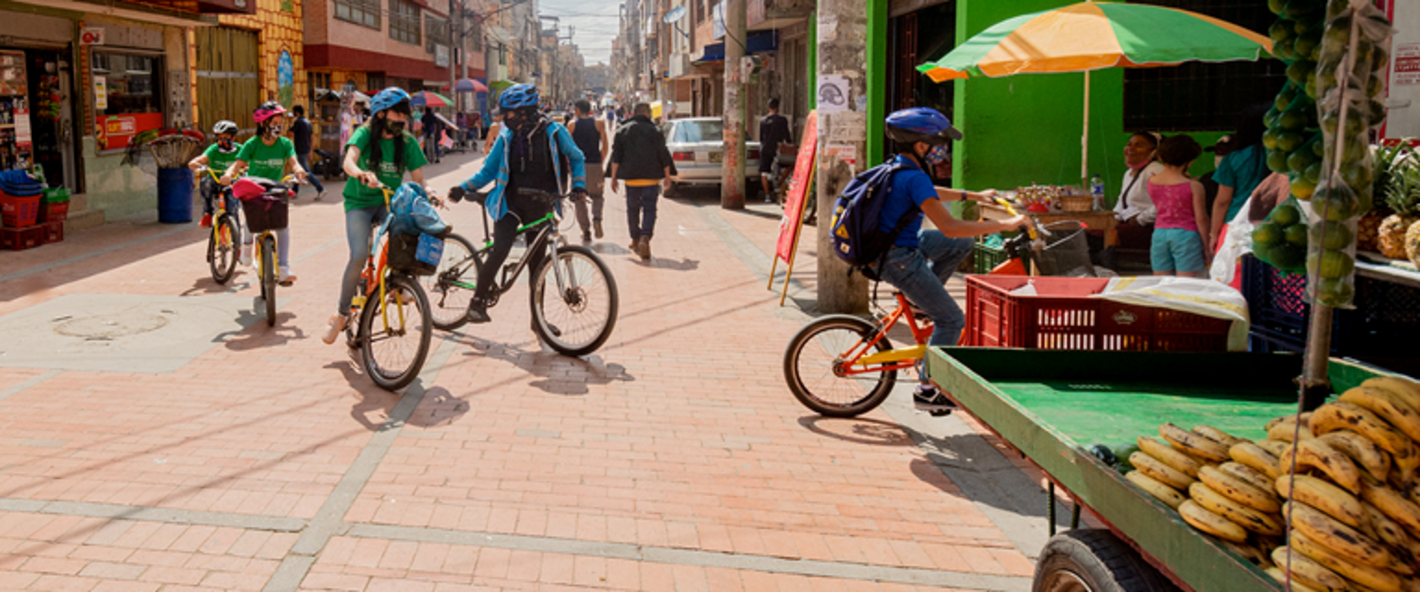#RethinkMobility
Road traffic injuries are a leading cause of death and disability worldwide, with around 1.3 million people killed and as many as 50 million people injured each year. For people aged 5-29 years, there is no greater threat to their lives. Globally, 1 of every 4 deaths occur among pedestrians and cyclists.
The Global Plan for the Decade of Action for Road Safety 2021-2030 reflects an ambitious target to reduce road traffic deaths and injuries by 50% by 2030. It highlights that they can be prevented by addressing the whole of the transport system, taking action to ensure safe roads, vehicles and behaviours as well as to improve emergency care.
PAHO/WHO, in collaboration with partners, organizes periodic UN Global Road Safety Weeks. This 7th edition focuses on sustainable transport, in particular the need to shift to walking, cycling and using public transport. Road safety is both a prerequisite for and an outcome of this shift.
PAHO/WHO invites all road safety and sustainable mobility partners to mark the 7th UN Global Road Safety Week by organizing events and activities and sharing messages and materials on social media with the hashtags:
- #RethinkMobility
- #StreetsforLife
- #RoadSafety
KEY MESSAGES
There is a desperate need for governments and their partners to rethink mobility.
Mobility is at a crossroads. At its best, mobility can help drive positive social change in many areas of society, promoting secure and equal access to employment, education and health and impacting favorably on several of the broader Sustainable Development Goals related to poverty, gender and sustainable consumption and production. In this context, there is a desperate need for governments and their partners to rethink mobility. This includes increasing investments in walking, cycling, and using public transport, modes of transport that can promote equity and health for people and planet. It is only by rejecting a business-as-usual approach that this new vision can be achieved.
Safety must be at the core of efforts to reimagine how we move in the world.
The number of road traffic deaths continues to rise, with around 1.3 million deaths per year and as many as 50 million injuries. Road traffic injuries are now the leading killer of children and young people aged 5-29 years. A prerequisite for rethinking mobility is to put safety at its core to ensure that roads are safe for all who use them. Road safety is a human right, and this right must not be compromised as we reimagine how we move in the world.
To ensure safety, road networks must be designed with the most at risk in mind.
People-centered roads and road networks are planned, designed, built and operated to eliminate risks of road traffic fatalities and injuries. Historically, most of the world’s roads have been designed for cars. The number of vehicles is increasing every day. In some countries, cars are also increasing in size, posing an even greater danger to those outside of these vehicles. We need to redesign streets for people, starting with those most at risk of injury: children and adolescents, people with disabilities, pedestrians, cyclists and users of public transport. Roads designed for them not only ensure they are safe for all, but also facilitate the transfer across different modes of transport for everyone.
When safe, walking and cycling can contribute to making people healthy, cities sustainable, and societies equitable.
Making way for more walking and cycling can impact favorably on health and the environment, through reductions in noncommunicable diseases like heart and lung disease, cancer and diabetes and decreases in air and noise pollution. These modes also contribute to sustainable urbanization, meaning cities that are built for the well-being of humans and the environment for future generations. Safe walking and cycling also help to promote more equitable societies, where people of all socioeconomic levels have the same degree of access to what their cities offer.
Safe, affordable, accessible and sustainable public transport is a solution for many of societies’ ills.
With some 70% of the global population expected to live in urban settings by 2030, there will be an increased demand for public transport to facilitate movement of large and growing populations. Buses, trams and commuter trains, which carry more people than private motor vehicles, can serve as champions for safety, access and inclusion. When public transport systems are made safe, affordable, accessible and sustainable, cities can develop in smart, compact ways. Efficient public transport infrastructure can facilitate greater access to employment, education and health and other services and encourage investment, making for more equitable and prosperous societies. Rural areas also need to be serviced with safe and reliable public transport.






















